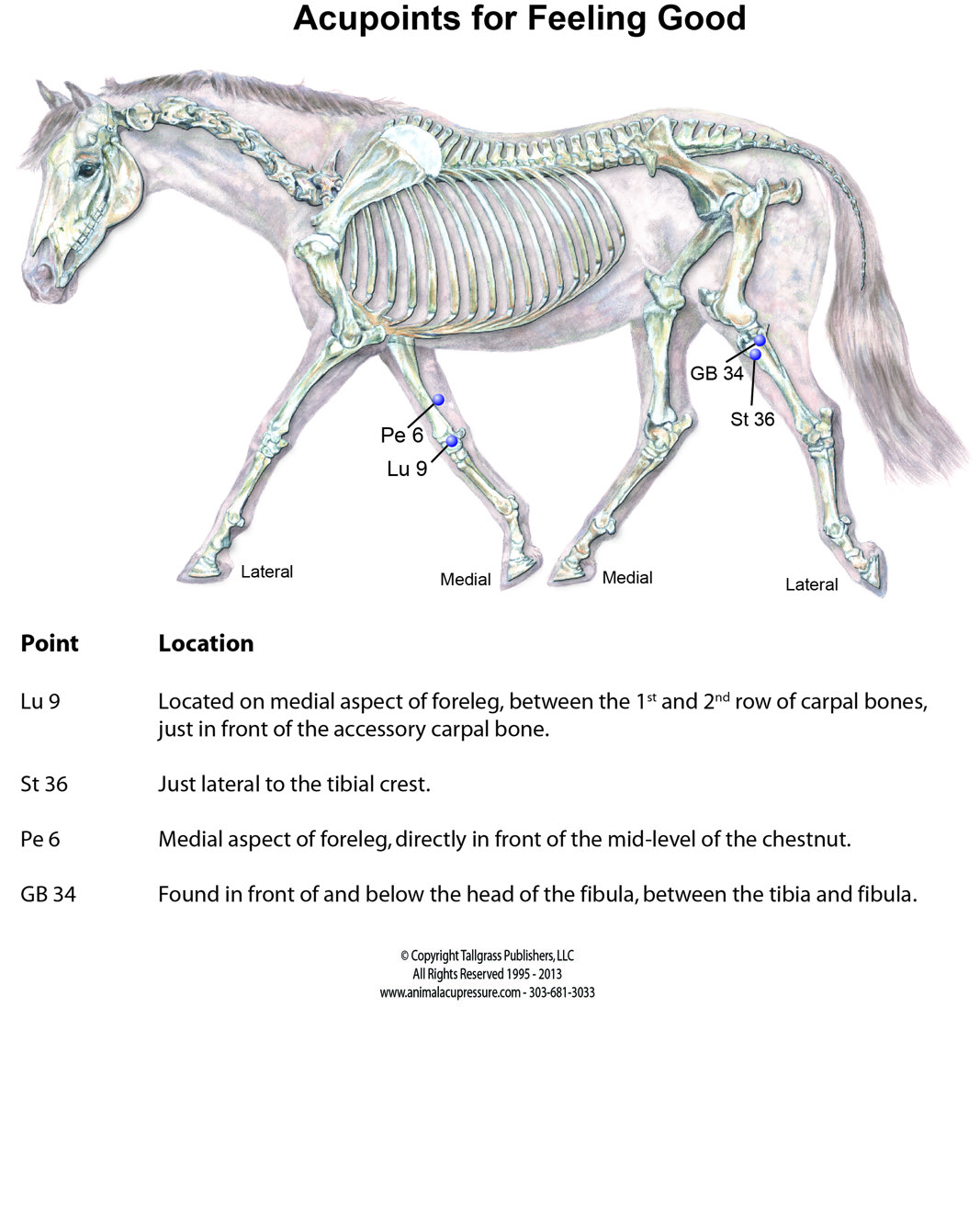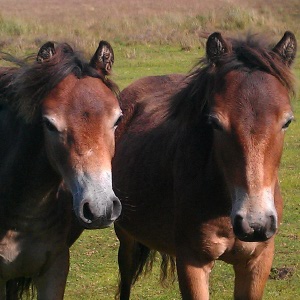FEELING GOOD & READY...With a Little Help from Equine Acupressure
Case Study By Amy Snow & Nancy Zidonis, Founders of Tallgrass Animal Acupressure Institute
The horse is an amazing athlete. Because of their speed, adaptability, and athleticism, the horse is our companion in many disciplines. Their powerful muscle tissue is anywhere from 45% to 55% of their body mass depending on the breed. In addition to all of their physical attributes, the horse’s intelligence makes them our most treasured, large, domesticated animal with which we share our passion for sport.
This is all so very true when horses are feeling good and are in tip-top condition mentally and physically. Horses can play tricks on us, though. They are good at not revealing pain until they are desperately in pain. In the wild, horses are left behind to fend for themselves when they can’t keep up with herd. Without the protection of the herd they will perish. That’s why horses are hardwired to appear sound for as long as possible. This predicament means that we, as horse guardians, don’t know our horses are experiencing pain during the early stages of a problem unless it’s an obvious traumatic event.
Repetitive injuries affecting the muscles, tendons, and ligaments are often difficult to detect because of their gradual onset. Seemingly suddenly you’re surprised to find your horse is limping. When this occurs you’ve lost the opportunity to address the damage when it began and when it would have been much easier to resolve. Then again, maybe your horse did give you subtle indications that he was not 100% sound.
Watch for a change in attitude of any sort, often this is the first sign of a physical problem. Inability to do something they did easily last week is not usually a case of needing more training or discipline, usually something hurts. Stumbling, shortness of breath, trouble turning, poor recovery from exercise, and, of course, any lameness are other tell-tail indicators something is wrong.
Competition can bring out the best and the worst in a horse. There are so many issues that can affect equine performance. Every anatomical system has the potential to break down whether it is genetically, or wear and tear, or stress induced. Musculoskeletal system issues are not necessarily traumatic in nature. Degenerative joint disease (DJD), navicular disease, and various degrees of muscle soreness tend to have a gradual onset.
Preventive Care
Don’t dismiss even a slight decline in your horse’s performance. Even if it seems minor, we need to pay attention to the hints our horses’ give us. Head tossing, refusing a jump, a raspy sound to his breathing, unable to settle while tacking up...any of these behaviors could mean something.
There are courses of action you can take to assure your horse’s comfort and soundness. Professional trainers will tell you to be sure to provide a warm-up period before exercise to prevent soft tissue stress and injury. Have your holistic veterinarian perform a thorough check of your horse’s respiratory, cardiovascular, gastrointestinal, and nervous systems before heading into heavy training. Add hoof and dental checks to your list, too. The equine athlete deserves this level of care and respect for his performance.
Besides, it’s no fun for either you when your sporting season is cut short by injury or disease. Staying happy and healthy is the goal. And, to that end, offering your horse a general acupressure session to help him feel good year-round is another valuable resource and benefit for you both.
Acupressure Session
Because you rely on your equine athlete, you probably want your horse to feel good and ready for training, competition, or simple trail riding. Acupressure is an excellent tool to provide your horse with the flow of energy and blood throughout his body needed to make that possible.
There are specific acupressure points, also called “acupoints,” known to have a particular effect on an anatomical system. These acupoints help bring chi, life-promoting energy, and nourishing blood to the horse’s bodily tissues and organs so they can function optimally and, in turn, your horse can perform optimally.
For instance, the acupoint called “Lung 9” (Lu 9) shown on the chart accompanying this article, is known to promote the health of the lungs. Stomach 36 (St 36), among its many attributes, supports the gastrointestinal system and enhances the flow of chi. While Gall Bladder 34 (GB 34) is considered the Influential point for tendons and ligaments and has a profound effect on the flexibility of those tissues. And, Pericardium 6 (Pe 6) helps with cardiovascular function and mental calming and focus.
Acupressure Technique
Chinese medicine practitioners have been helping animals feel and perform their best by stimulating these and other acupoints. Using the soft tip of your thumb or pointer finger, apply gentle pressure on the acupoint shown in the chart. Rest your other hand comfortably on your horse. Slowly count to 30 before moving to the next acupoint. Place your fingers on the acupoints on one side before working on the other side of your horse.
While you are stimulating these acupoints, the signs your horse may give indicating more chi and blood are circulating include licking, softening of the eye, stretching, shaking, passing air, and even sleeping. If your horse gives any indication that he is not comfortable with a point, just move to the next. There’s no need or benefit to discomfort during and acupressure session.
Offering this general “Feeling Good” acupressure session when grooming your horse will provide you many happy, healthy years enjoying your chosen equine sport.

Amy Snow and Nancy Zidonis are the authors of: Equine Acupressure: A Working Manual, Acu- Dog: A Guide to Canine Acupressure, and, Acu-Cat: A Guide to Feline Acupressure. They founded Tallgrass offering books, manuals, DVDs, Apps for mobile devices, and meridian charts. Tallgrass now offers an Animal Acupressure Resources website.
For animal acupressure courses please visit www.animalacupressure.com
